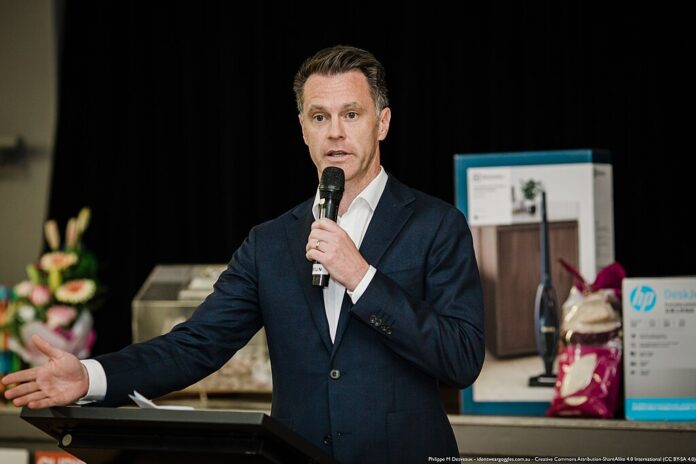The NSW government’s latest guidance urging public servants to return primarily to their offices has sparked debate
In a significant policy shift, the New South Wales (NSW) government has mandated that public sector employees work primarily from their offices rather than remotely. This directive, issued by Premier Chris Minns’s department, marks a notable change from the flexible working arrangements established during the COVID-19 pandemic.
The new guidance, released on Monday, requires affected employees to work predominantly from an approved office or workplace. This directive does not extend to frontline workers who are already engaged in field-based roles but focuses on those whose tasks can be performed remotely. The intention behind the move is to enhance productivity, foster workplace culture, and address the challenges faced during the pandemic and subsequent natural disasters.
Embed from Getty ImagesAccording to the Premier’s department, the NSW public sector, being the largest workforce in the country, must adapt to ensure effective service delivery. The directive emphasizes that while full-time employees are expected to work at least three days a week in the office, flexible working arrangements—such as part-time roles, job shares, and varied hours—will continue, especially for individuals with caregiving responsibilities and other commitments.
Premier Minns defended the policy by citing international studies that suggest remote work can lead to reduced productivity and less collaborative engagement. He argued that a robust office presence fosters mentorship and a unified mission among employees. “You can’t be a nurse in your tracky dacks in the lounge room, and you can’t teach a class in your backyard while you’re doing jobs around the house,” Minns stated, underscoring the need for a physical office presence.
The announcement has sparked diverse reactions. The Public Service Association (PSA), representing many public sector employees, expressed concerns about the potential negative impacts on staff retention. PSA General Secretary Stewart Little criticized the policy as anachronistic, arguing that it ignores the benefits of flexible work arrangements and could drive skilled workers to seek employment elsewhere. “I don’t think anyone in their right mind thinks that we’re ever going to return to pre-pandemic ways of work,” Little said. “Unless you want to keep staff, attract and retain qualified, specialized staff, then you have to work flexibly.”
Conversely, the Property Council of Australia has welcomed the new directive. State Executive Director Katie Stevenson praised the move as a “bold action” that could reinvigorate commercial areas. The council, which has noted high vacancy rates in Sydney’s central business district (CBD) and Parramatta, views the return to office work as essential for revitalizing urban centres and boosting local businesses. “More workers mean more life, more investment, and more business for our cities,” Stevenson said.
The NSW government’s decision has prompted a town hall event scheduled for Tuesday, aimed at providing further clarification to employees and addressing their concerns. As the state navigates this new directive, the debate highlights the broader challenges of balancing workplace flexibility with economic and operational needs.
Analysis:
Political:
The NSW government’s directive to return public sector workers to their offices reflects a strategic response to the shifting political and economic landscape. Premier Chris Minns’s push for increased office presence underscores a broader trend among governments and organizations seeking to enhance productivity and rebuild workplace culture post-pandemic. The policy also aligns with Minns’s political stance on improving public sector efficiency and leveraging the office environment to foster collaboration.
Social:
The shift towards mandatory office work has elicited mixed responses from the public and employees. While some view it as a necessary step to reinvigorate urban centres and improve team dynamics, others see it as a regression to pre-pandemic work models. The policy highlights ongoing tensions between the demand for flexible work arrangements and the need for in-person engagement. It also underscores the societal shift towards valuing work-life balance and the growing expectation for employers to accommodate diverse working preferences.
Racial:
The directive does not explicitly address racial considerations, but it could have indirect implications. For instance, employees from marginalized communities who may face additional challenges in commuting or balancing work with family responsibilities could be disproportionately affected. Ensuring that flexible work options remain available for those with caregiving duties or other specific needs is crucial in maintaining an equitable workplace.
Gender:
Gender dynamics are also a key factor in this policy shift. Women, who often bear a larger share of caregiving responsibilities, may face greater challenges in adhering to the new office-based requirements. The continuation of flexible work arrangements for those with external commitments is vital to ensuring that gender disparities are not exacerbated by the new policy. The NSW government’s approach needs to be sensitive to these dynamics to support gender equity in the workplace.
Economic:
Economically, the return to office work is seen as a strategy to revitalize commercial real estate and stimulate local economies. High vacancy rates in urban centres have prompted calls for increased office occupancy to boost business activity and investment. The Property Council of Australia’s endorsement of the policy reflects its potential to address these economic challenges by encouraging a more vibrant and active commercial environment.
